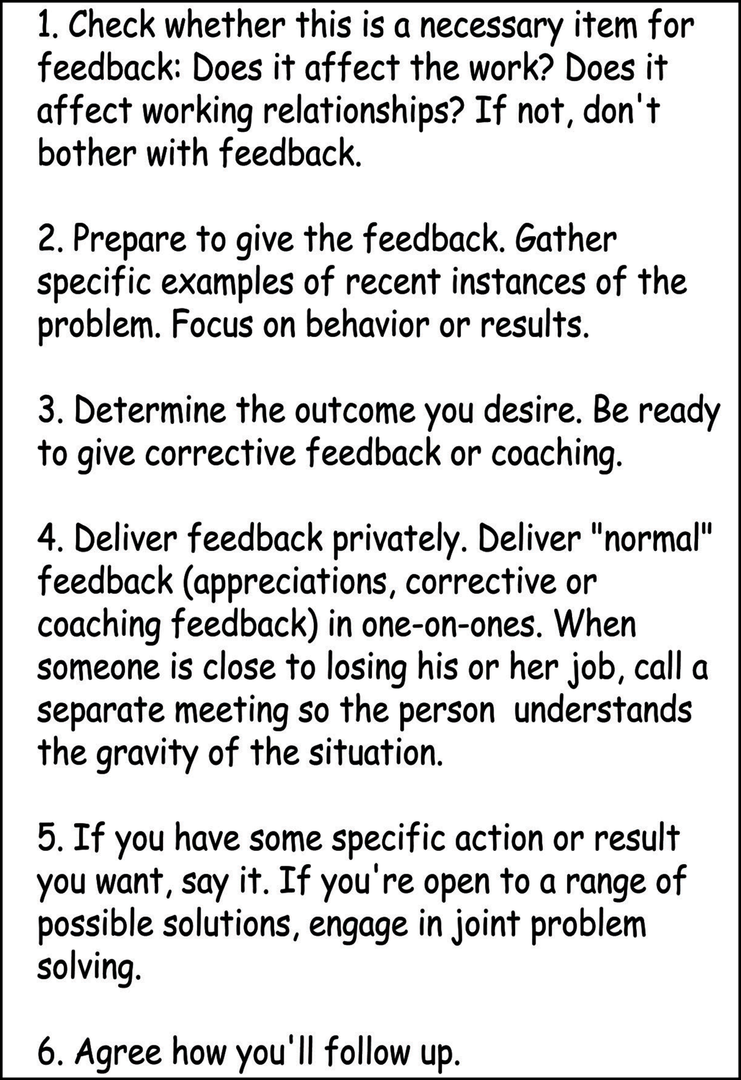Technique: Guide to Giving Effective Feedback
People (including you) need to know what they’re doing well and what they need to change to be successful. Use these steps for positive feedback, too. Provide people with specific information about what they should continue, as well as what they could do differently.
We use the six-step process for feedback shown in Figure 12, Six-step process for feedback.How to Talk About Work Performance: A Feedback Primer [Der03a]

Figure 12. Six-step process for feedback
Guidelines:
-
Be specific. No one can act on hints or vague feedback. Telling a person “This report is exceptional” may impart a glow but doesn’t help the person understand what was exceptional. “The table of contents made it very easy for me to find what I was looking for in this report” is more likely to result in more exceptional reports in the future.
-
Provide feedback as close to the event as possible. Waiting until a year-end review is not helpful. Even waiting until a quarter-end is not helpful.
-
Don’t label the person; describe the behavior or result. So instead of saying “Your work is sloppy,” say “I noticed the last set of release notes contained typing and spelling errors.”
-
Don’t blame the person; describe specifics. Instead of “You never test your code,” say “When you checked these last three changes in, you didn’t test the changes.”
-
Check to make sure the feedback recipient agrees that your description (observable behavior or results) is correct. When the feedback recipient doesn’t agree with your data, he or she will check out of the conversation and certainly won’t change behavior.
